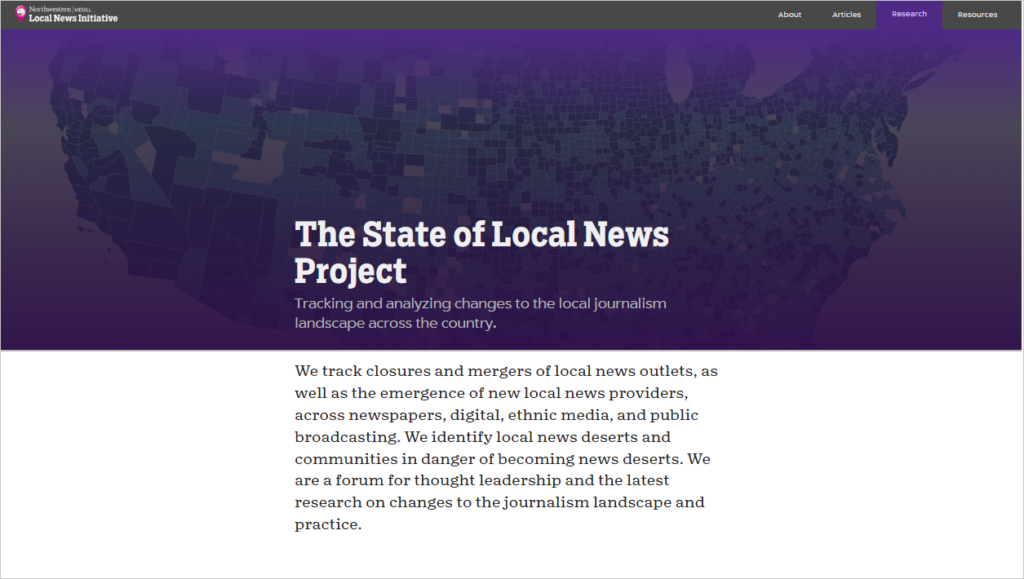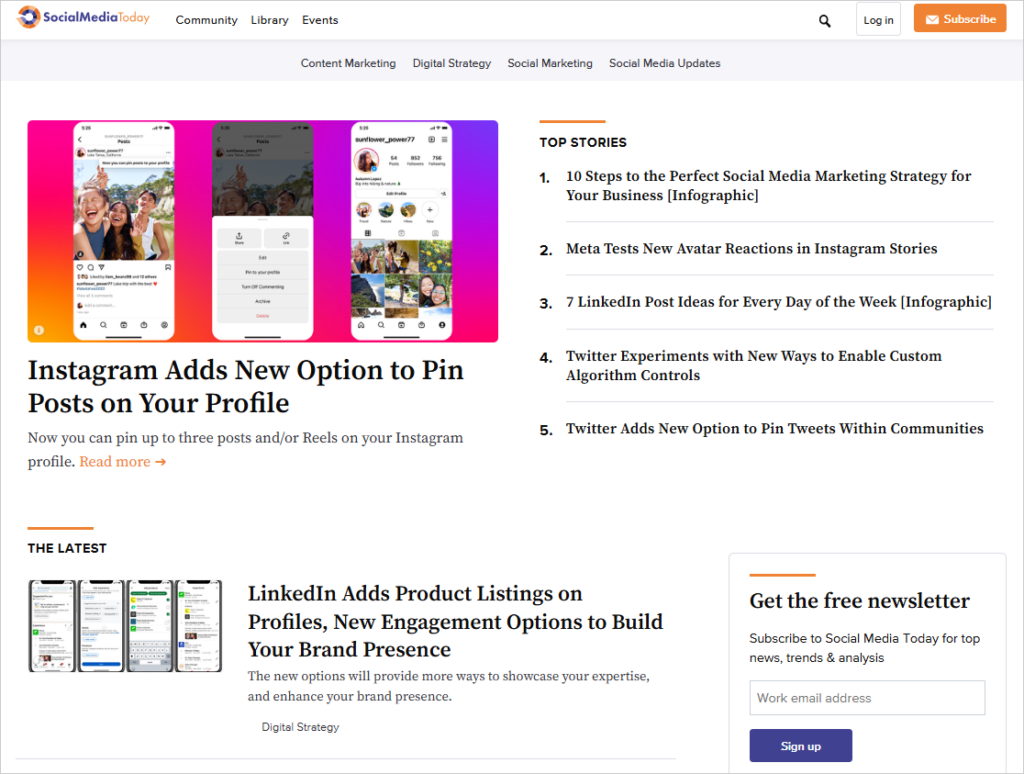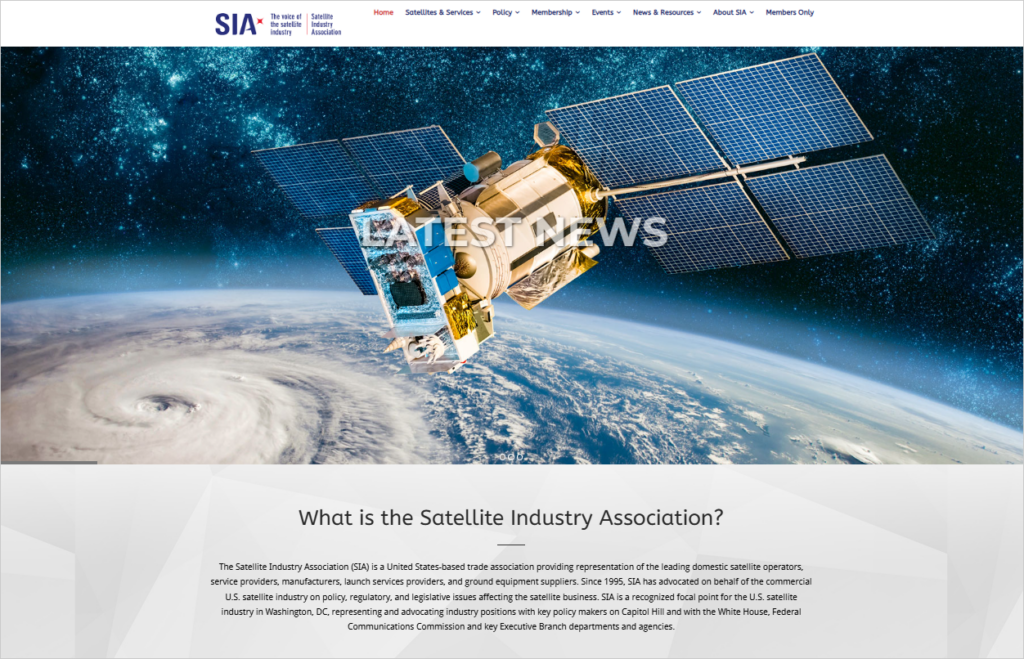Chronicling the Creation, Distribution, and Consumption of Media: Inside the Mass Communications Web Archive
In this interview, Amber Paranick and Kelly Bennett discuss their work on the Mass Communications Archive, a collection that documents how media is created, distributed, and consumed in the digital age. Drawing on their expertise as reference librarians, they explain how they navigated challenges in scope and selected content that complements the Library’s more traditionally acquired resources. This is part of a series highlighting new collections in the Library’s web archives and the behind-the-scenes work that goes into creating them.
Please introduce yourself. What is your job at the Library of Congress, and what was your role in creating this collection?
Amber: I am Amber Paranick. I’m a reference librarian in the Newspaper and Current Periodical Reading Room. I’m also a Recommending Officer for General Interest Periodicals and Non-U.S. News titles (in consultation with area-studies Recommending Officers). For the Mass Communications Web Archive, I coordinate and manage the collection along with Kelly Bennett, who you will meet as well! I first got involved in web archiving with the United States Election 2012 Web Archive and eventually assisted with the former General News on the Internet web archive (now the United States News Web Archive), the State Government Websites of the United States Web Archive, the soon-to-be-released Global News Web Archive, and other collections. I’ve also participated in archiving websites that didn’t belong to any particular collection, some of which eventually found a home in this web archive.
Kelly: I am Kelly Bennett. I’m a business reference librarian and some of the subject areas I focus on are marketing, advertising, and the telecommunications industry. I am a recommending officer for these subjects, as well as international business, which means I select materials in these areas. Materials can include books, databases, and websites for web archiving. This is the lens through which I look at this archive.

Can you briefly describe the collection?
Amber: The Mass Communications Archive focuses on websites that enhance, complement, and contextualize the Library’s rich holdings of materials related to the fields of mass communications. It’s a very broad area and our hope is to provide context for creating, distributing, and consuming media in various forms that influence the communications field in person and online through this curated collection. The archive aims to describe how information is shared and consumed, including, but not limited to, websites on advertising, the history of journalism, citizen journalism, and more. It enhances the Library’s analog collection of print media such as newspapers and periodicals by providing content that observes the transfer of information to audiences and consumers of news media.
How did you select material to archive? Did you have any specific goals or considerations in mind when nominating content?
Kelly: As a Business Librarian, my goal is to select sites that focus more on the industry of mass communication. So, I started with websites that follow the telecommunications industry. I am working to add more sites with information on mass media marketing, for example. In each site, I’m looking for information that won’t necessarily be found in popular or academic publications.
Amber: A lot has evolved in the world of web archiving since 2012, and it’s been fun to grow and shift as well. As collections have adapted and grown, we moved some websites from the General News on the Internet, which included newspapers’ websites, media blogs, and journalism magazines, to a more focused collection. Some websites were already part of an existing collection when this collection was formed so we could transfer the records easily. We have a Junior Fellow assisting us with the collection this summer, and they will be suggesting new content to nominate, as well as performing quality control on website captures and identifying potential issues such as missing images or documents, incorrect formatting, crawler blocking, etc. I’m excited to have a fresh set of eyes to assist us in the collection’s growth. And if you see any omissions, please let us know!

What are some of the highlights?
Amber: As the landscape of journalism actively shifts, as a reference librarian in the Newspaper & Current Periodical Reading Room, I aim to discover websites that aid in understanding these shifts for news researchers. Some of the websites that have been added to the collection include the State of Local News Project, which tracks and analyzes changes to the local journalism landscape at the national level, and the Latin American Journalism Review, a trilingual digital magazine published by the Knight Center for Journalism in the Americas at the University of Texas at Austin’s Moody College of Communication, and Social Media Today, which analyzes trends and developments in the social media industry.
Kelly: Professional associations are an important part of understanding an industry. For example, we have added several websites of industry associations related to telecommunications. These sites track the frequently changing issues and trends within the industry. A great example is the Satellite Industry Association (SIA) website which addresses a wide range of policy issues from 5G access to cybersecurity to space debris.
What challenges have you faced in creating this collection?
Kelly: One of the challenges in conceptualizing this archive is determining scope. “Mass communications” can include so many things. The creating and distribution of media are big topics that cross disciplines. The hope is that this web archive will capture information on mass communications that might be missed in our traditional collecting activities.
Amber: Time restraints on other work-related commitments have prevented me from spending as much time as I would like on this collection. Identifying recommended websites for inclusion has also proved challenging. So much journalism spreads via social media channels, and unfortunately we are currently not able to capture that content due to technical challenges associated with those platforms.

Why do you think web archiving is important for documenting this subject? How do you imagine researchers, now or in the future, might use this web archive?
Amber: Many essential contributions in fields related to communications are being published exclusively online and, therefore, can represent vulnerable cultural artifacts to be preserved for current and future generations of researchers. Web archiving of notable websites, blogs, and other formats allows the Library to complement and strengthen the collections with content that has historically been difficult to collect, including self-published, non-profit, and ephemeral formats. Some of these websites may be considered vulnerable or at-risk; sites created by individuals or small groups can be susceptible to loss due to networking issues and loss of funding, among other reasons.
Kelly: Mass communications are changing so rapidly in our time. This web archive may help future researchers track these changes.
Source of Article